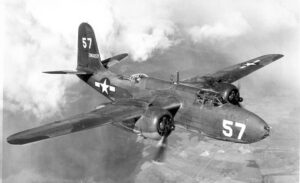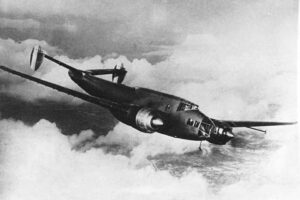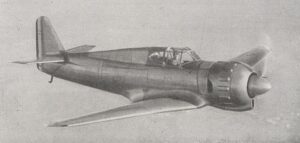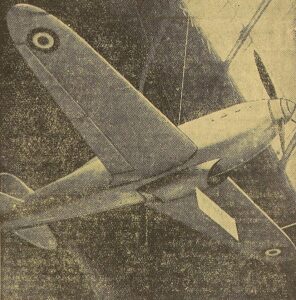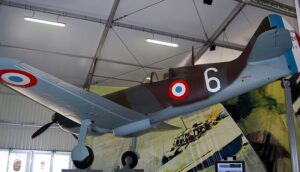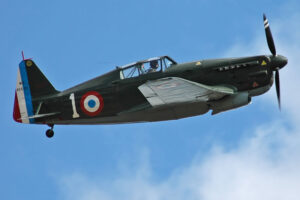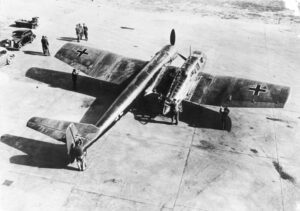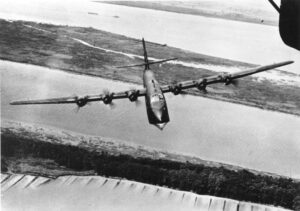Time Period: World War I
Country of Origin: United Kingdom
Type: Biplane, Fighter Aircraft
Manufacturer: Vickers Limited

Vickers F.B.5 Aircraft Overview
The British two-seat pusher military biplane of the First World War was the Vickers F.B.5 (Fighting Biplane 5), also referred to as the “Gunbus.” It was the first aircraft designed specifically for air-to-air combat to reach service, making it the first operational fighter aircraft in history. It was armed with a single.303 in (7.7 mm) Lewis cannon that was controlled by the observer at the front of the nacelle.
Vickers F.B.5 Aircraft History and Development
In 1912, Vickers started experimenting with the idea of an armed warplane that could take out other aircraft. The “Destroyer” (later known as Vickers E.F.B.1), the first resultant aircraft, was displayed at the Olympia Aero Show in February 1913 but crashed on its first flight. To avoid the issue of firing via a tractor propeller, this aircraft had a “Farman” pusher configuration, and it was armed with a single belt-fed Vickers gun.
The Vickers Type 18, also known as the Vickers E.F.B.2, was created by Chief Designer Archie Low as part of Vickers’ ongoing efforts to produce armed pusher biplanes. This two-bay biplane had a duralumin-covered nacelle with sizable celluloid windows in the sides and was powered by a single 80 horsepower (60 kW) Gnome Monosoupape nine-cylinder rotary engine. The aircraft was constructed of steel tubes. Its wings and tail were covered in fabric. The aircraft had a big semi-circular tailplane and unstaggered wings with wing warping for lateral control. The nacelle’s nose was still equipped with a single Vickers gun, which had a highly restricted range of motion and a terrible field of view for the shooter. On November 26, 1913, the E.F.B.2 took off from Brooklands for the first time.
The F.B.5 made its debut on July 17, 1914. In contrast to its predecessors, it had a straightforward, conventional design with a single 100 horsepower (75 kW) Gnome Monosoupape nine-cylinder rotary engine that drove a two-bladed propeller. There were 224 F.B.5s made in total, 119 of which were made in Britain by Vickers, 99 in France, and six in Denmark.
Vickers F.B.5 Specifications
- Crew: Two, pilot & observer/gunner
- Length: 27 ft 2 in (8.28 m)
- Wingspan: 36 ft 6 in (11.13 m)
- Height: 11 ft 0 in (3.35 m)
- Wing area: 382 sq ft (35.5 m2)
- Empty weight: 1,220 lb (553 kg)
- Gross weight: 2,050 lb (930 kg)
- Powerplant: 1 × Gnome Monosoupape 9-cylinder rotary engine, 100 hp (75 kW)
Vickers F.B.5 Performance
- Maximum speed: 70 mph (110 km/h, 61 kn) at 5,000 ft (1,500 m)
- Range: 250 mi (400 km, 220 nmi)
- Endurance: 4 hours 30 minutes
- Service ceiling: 9,000 ft (2,700 m)
- Time to altitude: 16 min to 5,000 ft (1,500 m)
Vickers F.B.5 Armament
- Guns: 1 × 0.303 in (7.7 mm) drum-fed Lewis gun in observer’s cockpit
Vickers F.B.5 Image Gallery
More Vickers Aircraft
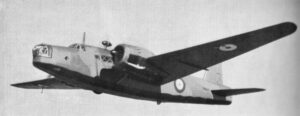
Vickers Wellington
The Vickers Wellington was a British twin-engined, long-range bomber designed during the mid-1930s at Brooklands in Weybridge, Surrey.
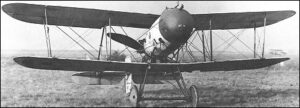
Vickers F.B.12
The Vickers F.B.12 was a British biplane pusher fighter aircraft developed by Vickers Limited and used during World War I.
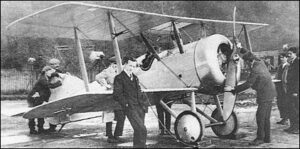
Vickers F.B.19
The Vickers F.B.19 was a British single-seat fighting aircraft used during World War I. It was also sometimes called the Vickers Bullet.
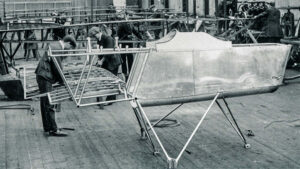
Vickers Boxkite
The Vickers Boxkite was a British experimental monoplane aircraft used in the flying school at Brooklands. They had a 50 hp Gnome engine.
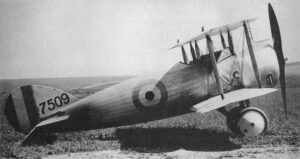
Vickers E.S.1
The Vickers E.S.1 was an early British single-seat biplane fighter aircraft used during World War I. Only three Vickers E.S.1 were ever built.


